- Why Mining Matters
- Jobs
- Safety
- Environment & Operations
- FAQ
- Links
- Fun Stuff
Mining makes your favourite sports possible!
Here are some examples:
Hockey | Skiing / Snowboading | Lacrosse | Football | Running | Curling | Golf | Baseball & Softball | Swimming | Sledding Sports
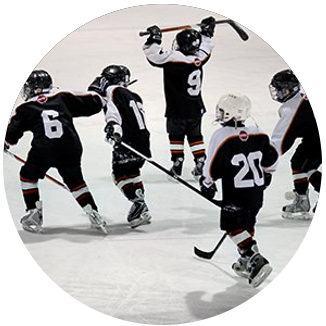
HOCKEY
Skate blades are made from chrome-plated carbon steel. Aluminum, titanium, and graphite make hockey sticks light and flexible. Helmets and masks use stainless steel, made with iron, nickel and chromium. Goal posts are made of steel, PVC (polyvinyl chloride) and aluminum.

SKIING / SNOWBOARDING
Ski and snowboard bases use aluminum, titanium, carbon fibre, and boron fibre. Bindings are made of steel. Weights of tungsten alloys help steady the ride. Other than steel, the advanced ceramics used in making boots contain composites that include aluminum oxide, clay, hydroxyapatite, lead zirconate titanate, lithium, silica, silicon carbide, tin oxide, titanium dioxite, yttria-stabilized zirconia, and zirconium diboride. Poles have aluminum or carbon-graphite shafts and tungsten carbide tips.

LACROSSE
Lacrosse evolved from Native American warrior training into what is now recognized as Canada's national summer sport. The sticks for lacrosse rely on shafts made of minerals such as aluminum, graphite, and titanium, or alloys of aluminum, magnesium, scandium, and zinc. Sulphur is incorporated in the production of rubber (made from crude gum) for the balls. The goal posts are made of steel, PVC (polyvinyl chloride), and aluminum.
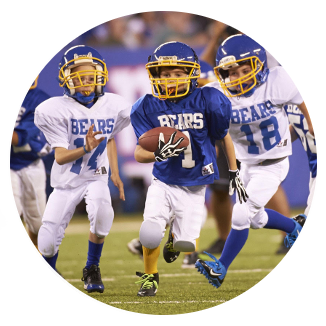
FOOTBALL
Cleats are made with zinc and other metals. Borax, salt, chromium, and sulphur are used in preparing the shoe leather. Molybdenum and titanium are used to help stabilize the sole. The playing surfaces require fertilizer made from potash. Stadiums require mineral products such as steel (iron, zinc, molybdenum, etc.), concrete (limestone, clay, gypsum, and aggregates), glass (silica sand and feldspar), tile (clay and feldspar), aluminum, and dimension stone.
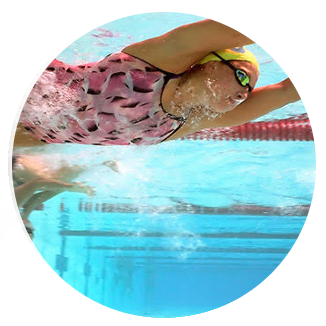
SWIMMING
Competitive swimming has existed for 2,000 years. Timing devices require an array of minerals: boron, copper, gold, and quartz to name a few. Silicone is used in making swim caps, and the headbands and nosepieces of swim goggles. Silicone is made from silicon and methyl chloride, and silicon is in turn made from silica (quartz sand) and carbon. Silver ions are used in purifying water. Building the pool itself requires products such as concrete (limestone, clay, gypsum, and aggregates) and tile (clay and feldspar).

RUNNING
Silver is used in running apparel such as shirts and socks to kill bacteria, and more importantly odour. Zippers are made with chrome-plated zinc teeth. Aluminum is used to make reflective tape and shiny fabric so runners are more visible. Copper is also sometimes incorporated in fabrics and other materials for its antibacterial properties.
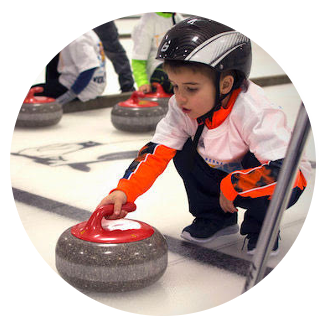
CURLING
Curling stones are literally stones, mainly made of granite. The molded plastic handle is attached with a steel bolt. The bolt hole is lined with brass (copper and zinc) that may also contain aluminum, lead, manganese, silicon, and tin.

GOLF
Golfers in the 15th century used metal for the head of the club, giving us the term “iron.” By the 19th century, club makers started using metal shafts to give players better control over the ball. Clubs are now made of graphite, titanium, beryllium, copper, aluminum, carbon fibres, steel, tungsten, and alloys of these and other metals. The course itself depends on fertilizers made from and also on sand for the traps.
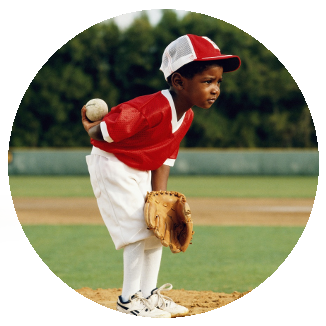
BASEBALL & SOFTBALL
Most high-quality bats are now made from a scandium-aluminum alloys, which makes them light, durable and easy to use. Scandium occurs in more than 800 minerals, and is mostly commonly obtained as a by-product of uranium refining. Clay is used in much of the playing surface; clay-sand composites are used to construct the base paths, batter’s box, bullpen, and pitcher’s mound. Minerals become especially important for night games: aluminum, copper, gases (halides, neon, sodium), glass fibre, lighting glass, steel, and tungsten are all used to light up the field.
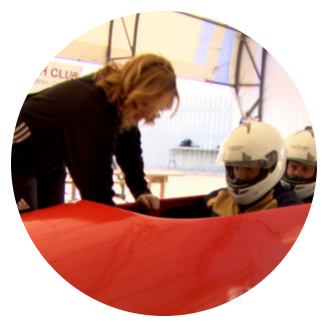
SLEDDING SPORTS
Steel is the basis of sledding sports such as luge, skeleton and bobsleigh, and allows sledders to reach speeds of up to 140 km/hour! Molybdenum is a key component in the manufacture of steel, giving it strength. The shell, or cowling, of the bobsled is made of fibre glass, which is made by weaving glass into a fine fibre. Glass is made from silica, or in other words, quartz sand.

















































































